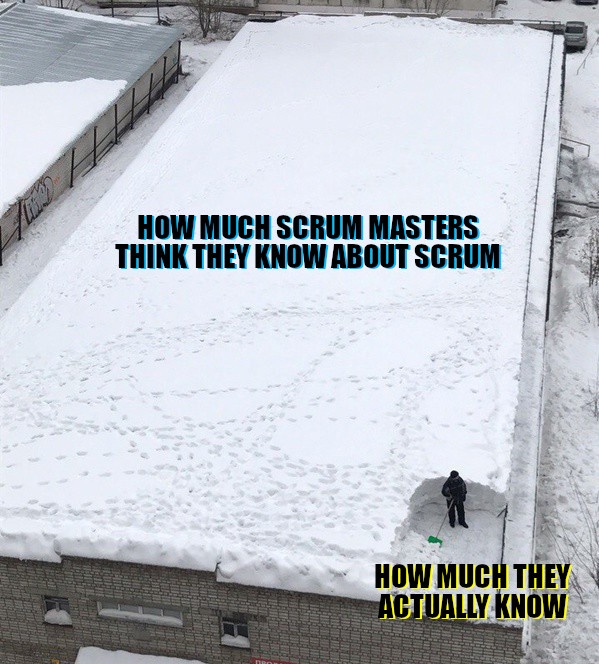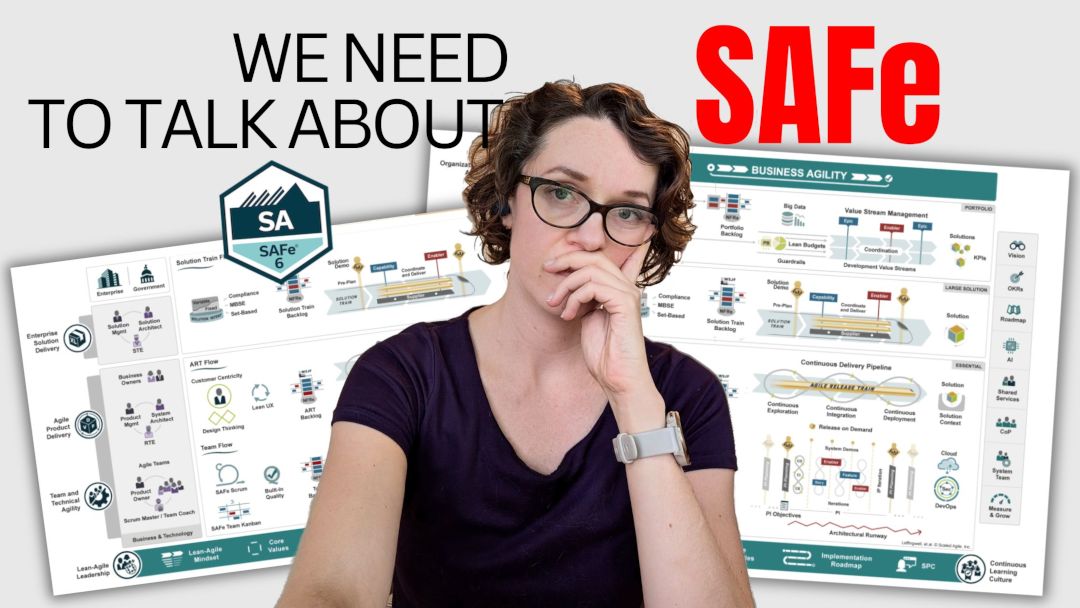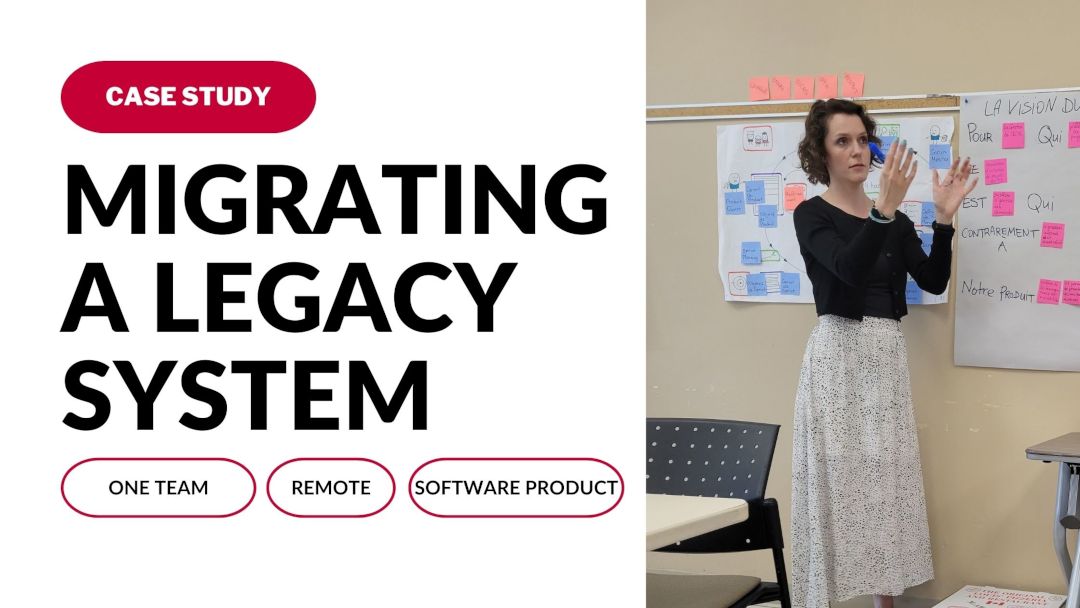“Daria, I’ve never been a Scrum Master, I passed my certification and now I am starting a new Scrum Master job. What do I do? Where do I start?”
These are some good questions with no one answer, unfortunately. But I’d like to share some of my thoughts on this topic in today’s article.
As we all know, there is no guidebook for Scrum Masters that tells us how exactly to accomplish our purpose. We are accountable for establishing Scrum as defined in the Scrum Guide and for the Scrum Team’s effectiveness. But no one tells us how to do it, really.
Even after passing the exam and attending training, there are a lot of questions that remain. So if you are a new Scrum Master, where do you even start?
Start with yourself
You represent Scrum for your team and your organization. As I talked about in my previous video about the new Scrum Guide 2020, you need to be on point when it comes to the framework.
In short, do some research.
Just reading the Scrum Guide and a few popular books is not enough. Just attending a class is not enough. You have to go above and beyond to learn more.
Continuous learning and research is part of your role. You need to get comfortable with doing it all the time. And there is no one list of resources to read to learn – it is up to you to discover them.
If there is a topic you are unsure about, for example, how to run a Sprint Review, go look up some resources.
And if at some point you feel that you know everything you need, think again.

If you dread all the reading and research, ask yourself whether the Scrum Master role is really for you. You can’t help your team improve, if you don’t want to improve yourself.
Understand your context
The best answer to most of the questions people ask me about their situation is “it depends”. Why? Because no team or organization is the same.
Something that worked in one instance, might not work in the other. In addition, it’s hard to really understand the context of the situation without living it.
However, as a Scrum Master you are in the perfect spot to observe and figure out what the situation really is. You are the best judge of what might be wrong and how to fix it.
Observe, listen, meet with people in your organization – spend some time understanding your context. Once again, it’s up to you to decide how to approach it. You might do one-on-ones with your team members, attend meetings from your and other teams, get involved in communities of practices, etc. There is a lot to do here.
Focus on figuring out the why behind processes, communication and relationships in the organization as a whole. In the Action Plan for Scrum Masters I talk a bit about some steps you can take that can help you along the way.
Identify challenges to work on
Once you have figured out what is going on and started to build relationships, look into where your help is needed the most.
This is where you should create an improvement plan.
Whether this is something you want to share with the team or management, or this is just something you want to work on by yourself, having a clear plan of action is essential.
With better understanding of your context, you can identify the key challenges and impediments to success. You won’t be able to fix everything at once, so create your own ordered backlog to help you focus.
What change will help the team and the organization to get higher benefits from Scrum?
Remember, your goal is not to be a Scrum Police. No! Your goal is to help the team and the organization get the most out of agility and the Scrum framework.
Is it really the 25 minute Daily Scrum that reduces focus? Or is it actually constant interruptions from stakeholders?
Evaluate the impacts and decide what to do.
Repeat
By now, you should have lots of things to worry about. While this post is not a guide to a Scrum Master role (as I said earlier, there is none), it gives you enough to work with.
With a clear improvement plan, you can start your work on helping your team and organization implement proper Scrum.
But it is not just about implementing the improvements and that’s it. Keep learning more about the context and the impact of improvements, keep learning Scrum and agility. It is a continuous process of inspection and adaptation.
But, Daria, I don’t even know how to land the job! How do I even get into this field with no experience?
That is the tricky part, of course.
Some of the advice I always share is to start where you are. If you are already working in a different position, start implementing what you’ve learned from Scrum in your role. Your job title might not be a Scrum Master, but it doesn’t stop you from being the change agent for agility.
My first Scrum Master role was an interim position that I have created myself. I have shown my manager the benefits of having a Scrum Master in our team, and asked to be assigned that role. It was never logged in the HR system, but it was my very first experience that helped me land a real Scrum Master job later.
However, I understand that not everyone can get that lucky or encounter a supportive manager.
How do you get your foot in the door? Unsure about what agile role is your career sweet spot? PO? Scrum Master? Technical? Non-Technical? Have no luck getting through interviews? Don’t know how to sell yourself so recruiters see your transferable skills and give you a chance?
Getting a mentor or a coach to help you get the job can be extremely beneficial as well. Nada Buhendi is just the person to help you. She has 15 years of experience in technical roles: agile transformation coach, UX, business analyst, and product manager. She transitioned to becoming a certified senior professional career coach because she discovered and unleashed her own awesome to learn that her North Star is helping tech professionals take their agile career to the next level. She has successfully helped many professionals like you transition into the agile world and land offers in the US, Canada and UK. You can find her at https://www.linkedin.com/in/nadabuhendi/ where you can book a virtual coffee with her to learn more about what she does.
If you need more help, there are plenty of resources that I have created that will be a great addition to your Scrum Master toolbox. Especially, if you are just starting out.
One of the key learning opportunities for you is the online course Success with Agile and Scrum. If you are a new Scrum Master, it will give you not only a deep understanding of Agile but actionable steps to implement it in your team and organization through well-designed worksheets. Each lesson provides you with plenty of ideas of what to do and what improvements to focus on when you bring agility into an organization.
You can also join the FREE email course Scrum Master Action Week to give you a structure to work on honing your skills as a Scrum Master.
In my video “What to do when joining a new team“, I share some tips on what to do in your first days as a Scrum Master. The Action Plan for Scrum Masters helps you define some of the regular tasks you can do during the day.
Have a question about the Scrum Master role? Share it in the comment below.



